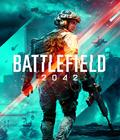It's hard to come away from the recent open beta for Battlefield 2042 with an accurate take on what the game will be like when it releases next month. The open beta was clearly filled with Battlefield moments, from buildings crumbling due to sustained tank fire to pitched gunfights within a capture point. It also lacked a hint of a progression system. The hardest thing to get a handle on is how the sheer number of changes will affect the overall feel of the game, as some can substantially impact a formula that has been largely unaltered for decades.
I knew going that the old class system was gone and replaced by "specialists." In theory, each specialist belongs to one of the old classes: Assault, Engineer, Recon or Support. In practice, that relationship doesn't matter, as any class has access to the same attachments, gadgets and guns. You can play as the Assault specialist but roll with a loadout that contains an anti-air launcher (previously Engineer-only) and a sniper rifle (previously Recon-only). I'm not necessarily against giving players flexibility, but it makes it impossible to know who can throw down ammo or who can bring you back up after being downed.
In theory, every specialist has a unique ability that is equally advantageous in their own way. The Recon specialist can sense nearby enemies, and the Support specialist can heal people at longer range with a sort of medic gun. In practice, most people in the beta chose the Assault specialist, as his relatively long-range grappling hook allows players to have a level of mobility that is almost unprecedented in the Battlefield franchise. The ability to grapple up and onto just about any bit of geometry is incredible, from snipers looking to establish interesting roosts to those who want to get up on top of a building filled with enemies.
The knock-on effects from this are profound. In previous Battlefield games, you could almost tell a soldier's role from their silhouette, if not from their class icon on the HUD and minimap. With unrestricted loadouts, not only is it tough to know who on your team (or the enemy team) is their medic, etc., but it's also tough to immediately tell who is on your team versus who is an enemy. Not even the uniform colors differ, as the specialists are meant to be their own characters, so you end up with situations where a half-dozen identical-looking people are shooting at each other. In those situations, you're completely reliant upon HUD icons to tell you who is friend or foe, let alone who might have what gear.
The larger maps are counterbalanced by the doubled player count (at least on PC and the next-gen consoles), so the action feels roughly of the same "density" as in previous games. It can get chaotic at times if a large contingent from both teams are at the same objective, but generally speaking, the fight usually takes place in 3-4 big flash points on the map, even if the locations frequently change. The maps use the greater size to their advantage and flex varied landscapes to fight within. In Orbital alone, you have the industrial complex that is the rocket launch facility to the east, smaller clusters of buildings for infantry firefights to the west, a jungle-esque area to the south that ends at the beach, and the giant skyscraper to the north.
Change isn't a bad thing, and with a decades-old formula, it only makes sense that Battlefield would take some opportunities to evolve. The outright discarding of the old class system is a massive change that is difficult to overstate, and I suspect this alone will be a subject that DICE will continue to refine as it receives player feedback. It still feels like a Battlefield game when you get into firefights and take cover from enemy armor as it blows a hole in the building you're hunkered down within. I'm incredibly curious how all of those changes come together; for better or worse, this is the boldest that DICE has been with the franchise in a very long time.
Previewed on: AMD Ryzen 7 3700X, 32 GB RAM, NVidia GTX 2070 Super
More articles about Battlefield 2042











 Battlefield 2042 is a groundbreaking first-person shooter set to revolutionize the modern multiplayer sandbox.
Battlefield 2042 is a groundbreaking first-person shooter set to revolutionize the modern multiplayer sandbox.



















